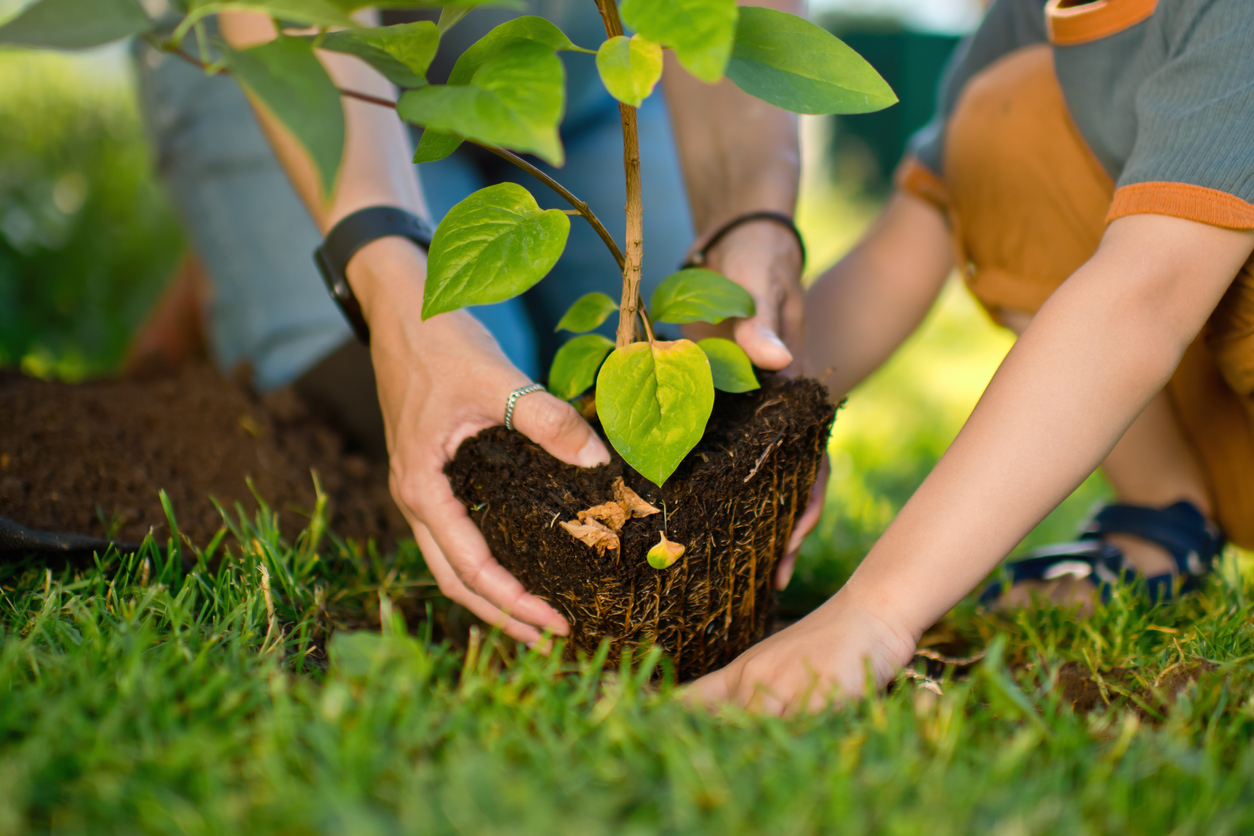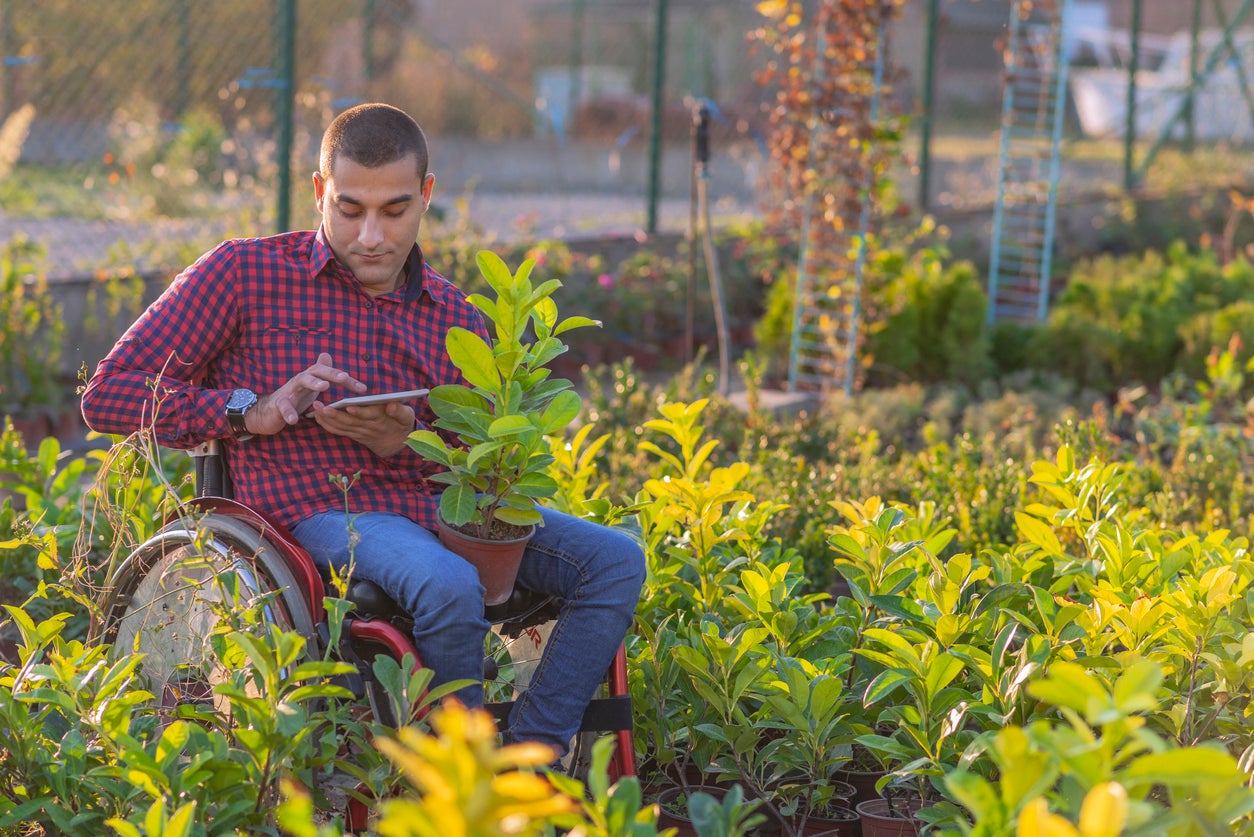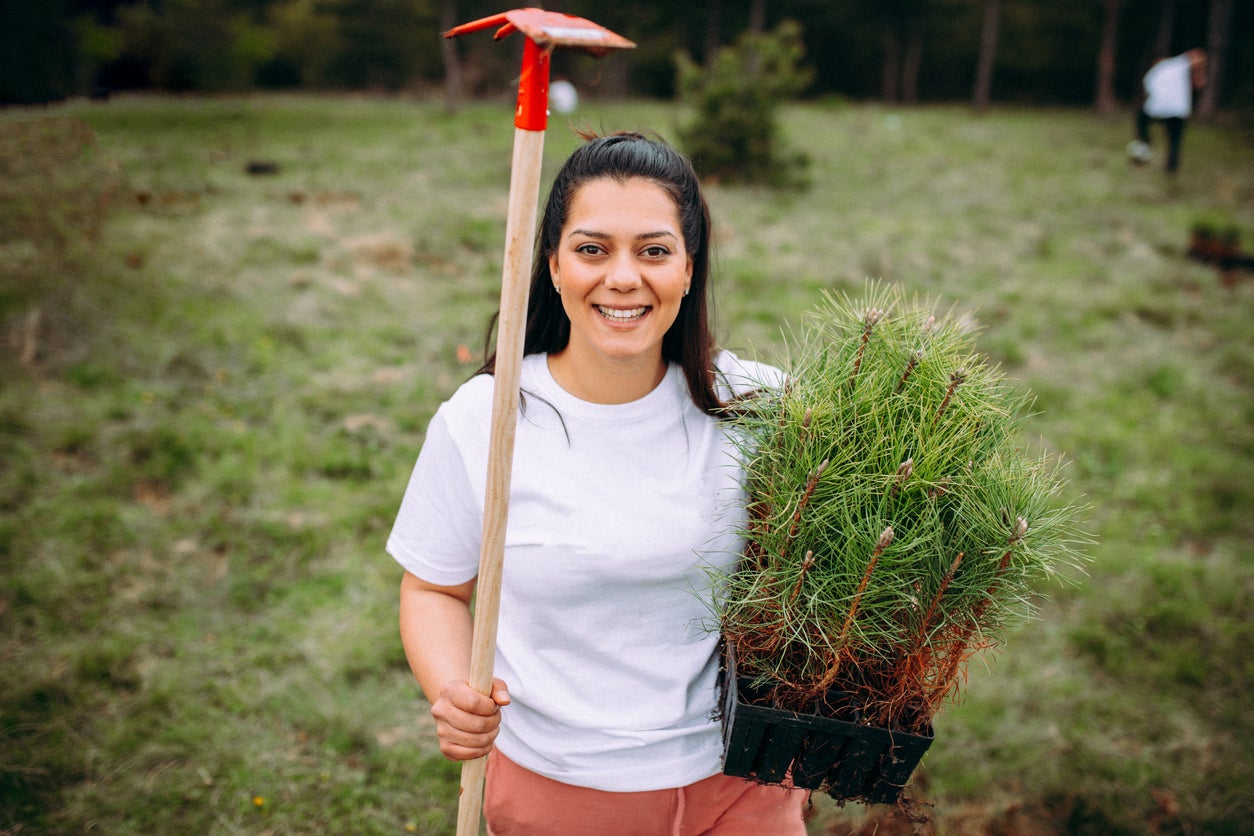

We may earn revenue from the products available on this page and participate in affiliate programs. Learn More ›
The first Arbor Day was celebrated in Nebraska on April 10, 1872. More than 1 million trees were planted in the state on that day. By 1920, at least 45 states and territories were celebrating Arbor Day. Today, the official day to celebrate trees in the United States is on the last Friday in April. Many communities observe this day by organizing large-scale tree planting events. Planting a tree is a wonderful way to mitigate the climate crisis and beautify your community, right? Well, not always.
A healthy tree does help absorb carbon emissions, filter water, and provide shade and habitat for various wildlife. Although planting a tree is considered a planet-positive activity, there are situations in which planting one can have negative effects. Before you plant a tree this Arbor Day, consider some circumstances under which you shouldn’t plant a tree, which trees or plants to choose, and tips on how to plant a tree properly.
Take your local biome into account.
A biome is a large geographic area characterized by its vegetation, soil, climate, and wildlife. “You need to have the right tree in the right place,” says Dr. Douglas Tallamy, professor, conservationist, and author of The Nature of Oaks. “That means you have to appreciate what biome you live in.”
If you live in the High Plains region where there are naturally no trees, planting a tree will only use up valuable water resources. Similarly, grassland biomes aren’t meant to support large vegetation like trees. “You’re just robbing Peter to pay Paul, all to put a tree where it doesn’t belong—that’s not sustainable,” says Tallamy. So embrace the plants that are native to your biome, even if they are not trees.
RELATED: 12 Things an Arborist Wishes You Knew
Plant a tree that will contribute to its ecosystem.

If your biome does naturally support trees, is it best to plant a native species? Sort of. “I like the term contributor and noncontributor,” says Tallamy, “Plant the plants that will contribute to the ecosystem in which you live.”
To understand exactly what he means, think about trees’ role in ecosystems. Most people know that trees and plants create oxygen and absorb carbon dioxide (CO2), but they are much more than large air filters. “One of the major things that trees do is turn sunlight into food for animals,” explains Tallamy, “If the animals can’t eat that tree then that’s a failed ecosystem function.”
The best trees for a given biome are often ones native to the area, but not all native species are contributors. “Insects are the primary means by which energy is taken from trees and given to animals,” says Tallamy. However, some people may think that having a tree that no insect will touch is a good thing, not realizing that essentially means that the tree is an ecological dead end.
Luckily, there’s room for compromise in a biome! “Up to 30 percent of the tree biomass in your yard can be non-native or noncontributing trees and plants, but none should be an invasive species,” says Tallamy. Making sure that 70 percent of the trees and plants in your yard are contributors will help keep your local biome in good health.
RELATED: 7 Signs Your Tree is Dying—and How to Save It
Use online resources to find the best trees and plants.

Okay, so planting a native, contributing tree is best—but how do you find one? Thankfully, some organizations specialize in this topic and have online resources to help you find the best species for your zone. “You can go to Native Plant Finder on the National Wildlife Federation website and find out the best woody plants and herbaceous plants for your county anywhere in the country,” Tallamy suggests.
And remember, Arbor Day doesn’t have to be solely about planting trees. There are numerous shrubs and flowering perennial plants that are contributors to their native biomes. If you want to take the guesswork out of plant selection, look at the Garden for Wildlife collection of native plants available in 36 states, or search for your state’s native plant society. We can all be part of the solution to restore native habitats with one plant choice.
RELATED: The Dos and Don’ts of Landscaping Around Trees
How to Plant a Tree on Arbor Day

If your biome supports a tree, then get planting! “When you plant a tree, you get to reap the benefits of trees all year long,” says Chris Plante, District Manager at Davey Tree. “Trees do a lot more than clean the air and save lives; they save you money, too, by lowering energy costs.” Follow these expert tips when planting a tree at home:
- Pick the right spot to plant your tree. “Consider the amount of sunlight, competing ground vegetation, and ground hazards, like wires or pipes,” says Plante, “ Most importantly, plan enough space for your new tree to grow.”
- Determine the best time of year to plant your tree, according to the tree species. “The best time to plant a tree is 20 years ago,” jokes Plante, “The second best is this spring or fall.”
- Dig the planting hole to be two to three times wider than the tree’s root ball. “This will allow the new tree’s roots to spread out,” explains Plante, “The point where the tree comes out of the ground should be ½ inch higher than the ground around it so that water won’t collect at the tree’s trunk.”
- Help your tree thrive during its first few years by watering it regularly. “One inch of rainfall equates to 625 gallons of water per 1,000 square feet,” says Plante.
- Cover the planting hole with 1 to 3 inches of mulch (either shredded hardwood or leaf mulch) up to the trunk. “But do not over-mulch the tree or ‘volcano’ mulch,” warns Plante. (Volcano mulching involves piling a high layer of mulch against the trunk.)
